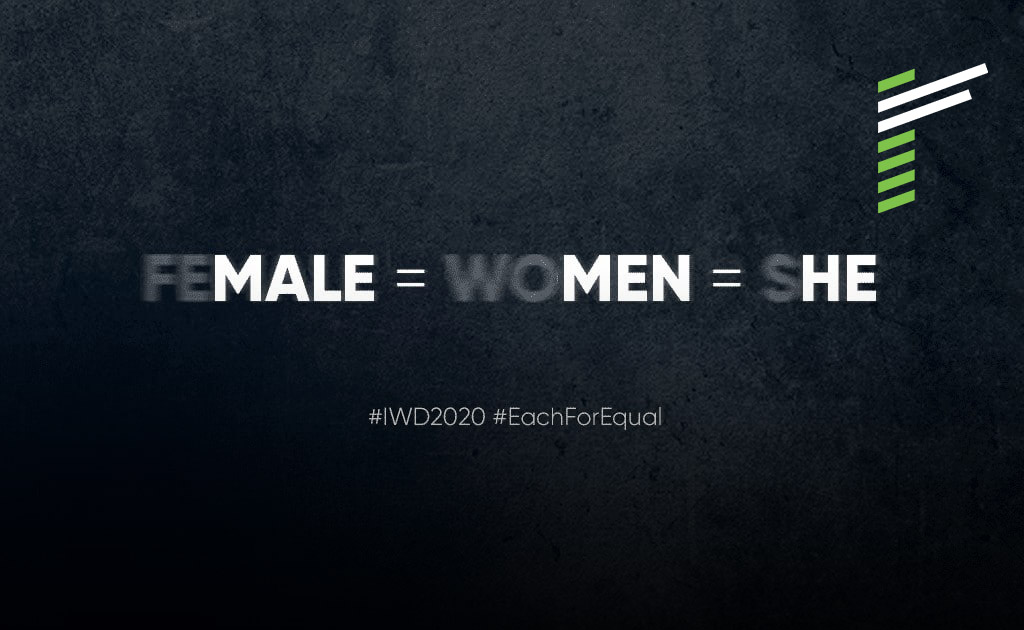International Women’s Day has become a fixture in our calendar at Renoir as it celebrates one of our core values – equal opportunity for all. Like our clients, who are operating in an increasingly globalised market, businesses must seek to reflect that diversity (be it gender, race, age, sexual orientation, etc) in its operations, if it aspires to continually innovate and grow.
The benefits for it are also clear – diversity in all forms is vital for companies to thrive as diversity of thought is necessary to get a broad range of views and opinions which allows a company to consider the widest possible alternatives and ideas. Without that diversity of people around the table, divergent views and opportunities to stay ahead of the curve are likely to be left out.
But beyond the organisation’s ability to “think” better, one has to also consider broader shifts in the battle for talent and investors.
Workforce attitudes and behaviors are shifting with the emerging presence of millennials and Gen Z advancing through organisations. Our observations point to the fact that the most talented of these individuals go to places with diversity. Even when viewing it from an investor’s perspective, an inclusive approach to hiring is also a signal that the firm is applying best practices and that it is well-run.
To share their thoughts on the topic of gender diversity and especially on the successful implementation of gender diversity in organisations, we talked to our colleagues at Renoir Consulting – Martyn Webber, CEO, South East Asia and Yen Nguyen, Executive Director, Philippines. (Editor’s note: The challenges and principles that we’ll be covering below, could apply to any diversity initiative)
“IT’S GOING TO BE A LONG JOURNEY…”
The World Economic Forum’s Global Gender Gap Report 2020 benchmarks 153 countries on their progress towards gender parity in four dimensions: Economic Participation and Opportunity, Educational Attainment, Health and Survival and Political Empowerment. In its latest instalment, it made the sobering conclusion that gender parity will not be attained for 99.5 years.
Whilst the report cites positive progress in the world of leadership, women’s participation in the wider labour market has stalled and financial disparities are increasing.
DIVERSITY IS HARD TO IMPLEMENT
The hard truth is that diversity is not easy to implement. It goes beyond espousing one’s belief in corporate communications and HR policies; it requires top-down, systemic changes to the company culture and its daily way of work. As the effort and time required is often under-estimated, and sustainability of the initiative over-looked, it’s typically approached as a “side project.” By focusing only on the softer aspects of the change, large companies especially fail to make meaningful change to more ingrained aspects of the company, such as its management style, its structure and how performance is measured (and rewarded).
Because of that, Renoir’s experience has led it to approach gender diversity as a strategic outcome like any other in business – it must be planned for, actively managed and communicated.
5 THINGS TO CONSIDER WHEN IMPLEMENTING WORKPLACE DIVERSITY
1. Does your organisation (and its people) truly believe in the value of diversity?
That conviction has to go beyond “I believe it’s the right thing to do.” One has to be personally convinced that diversity will contribute to the organisation’s performance.
A professor at Harvard Business Review conducted research at 1,069 leading firms across 35 countries and 24 industries and concluded that “beliefs about gender diversity create a self-fulfilling cycle. Countries and industries that view gender diversity as important capture benefits from it. Those that don’t, don’t.”
The data suggests that for the value of diversity to be realised, the organisation’s leadership and employees have to themselves be convinced of its contribution (not just hear some rules about it). They can’t just see gender inclusion as an obligation.
2. Is top management visibly involved?
Having done the above, this next part is a lot easier. Top management has to be an active “sponsor” of diversity initiatives. Senior leadership must be involved and visible throughout. And to walk the talk, diversity needs to be first implemented at the very top.
3. Have you included a diversity of people in designing for a more inclusive environment?
The most important facet of this planning is to include a diversity of employees (physically, culturally, ideologically, functionally and across the organisational hierarchy) in setting the path. The focus here is less about education but more about putting inclusion into action.
The diversity of perspectives is key when considering how the new way of work needs to accommodate differing needs, ambitions and mission partners. Getting this right helps to deliver on this one key ingredient in making diversity truly work – psychological safety. People only contribute unique ideas to the group when they feel comfortable enough to speak up and present a contrarian view.
By co-developing the pathways for people to follow in fostering a more gender-inclusive organisation, it helps them to realise for themselves where the opportunities may arise and where the challenges might be.
4. Does your leadership development and succession plan factor in for diversity?
One of the brightest signals to talents, of the organisation’s conviction about the value of diversity, lies in its leadership development and succession plans.
This is where organisations need to take a long, hard look at its organisational structure and forecast its future needs, and strategically plan how a more diverse management team can fuel its growth. This cascades to how individual performance is measured and rewarded, and identifying great performers and helping them to develop the skills and tools for advancement. The supporting ecosystem for developing your future leaders would likely go beyond just training and development, to include a holistic approach to provide greater flexibility to fit work into their lives. This can include leave policies, flexible working arrangements and other customised employee benefits.
5. How is diversity integrated with the business’ objectives and performance?
Measuring outcomes is key. For any diversity initiatives to be sustainable, it needs to be assigned with measurable objectives that are integrated with the rest of the company’s strategic objectives and operations. A robust performance evaluation programme – even for diversity initiatives – functions as an accountability mechanism, and progressively establishes and validates the business case for diversity, internally and to key stakeholders.
Having covered five key considerations above, if there were to be one key takeaway from this article, it’s the fact that implementing diversity within the organisation won’t come from a one-size-fits-all approach – there is no singular path to inclusivity. Any successful culture change requires first getting down into what makes the organisation “zig”, before being able to identify how to make the organisation “zag.” And that’s where change management comes in.
Speak to us on how we can apply our expertise in change management, from more than 25 years of results-based experience, to prepare your organisation for its next phase of growth.










